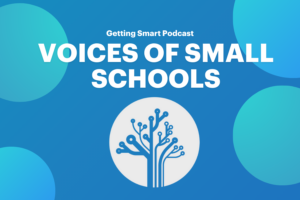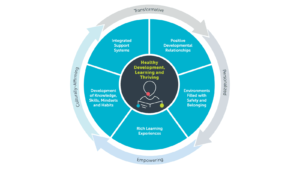Developing an Innovation Mindset

Is it possible to train your brain to think differently? I’m skeptical of those brain-training games but I’m certain that learning and disciplined habits can improve intellectual output.
The opening chapter of my book, Smart Cities That Work for Everyone, discusses mindset, “Beyond the basics, the most important aspect of career readiness may be developing an innovation mindset–being prepared to create one’s own job and the curiosity, self-direction and commitment to add value in every circumstance.”
A productive disposition combines:
- Growth Mindset: Applied intelligence is not fixed, it expands with effort
- Maker Mindset: Recognizing opportunity and taking initiative
- Team Mindset: Collaborating with diverse teammates.
Context matters–the number and quality of your collisons helps shape your mindset. Organizations you are part of either expand or contract your mindset. Project Innovation said, “Organizations operate on frequencies that define the taken for granted ways of thinking and acting on a daily basis.” Being reflective about how you think and how your organization thinks is the first step to developing an innovation mindset.
Reading, writing, visiting and thinking are the best ways to learn:
- Read to build breadth in your field, read biographies of innovators, and read outside your field to improve your ability imagine translational innovations
- Write to understand your thinking and write to reflect on and guide your learning
- Visit other countries to remember we share the planet with 7 billion people, visit innovators to gain the full sense of what they’ve done and how they do it
- Think with smart people about tough problems.
Over the last 20 years I’ve had the chance to read, write, visit and think with really smart people about really big tough problems–and that changed the way I think about what’s possible.
It may seem counter intuitive, but it takes real discipline to innovate and inculcate an innovation mindset. Jim Collins said last week that he tracks his daily creative hours with the goals of scheduling at least 1000 per year. Collins said everybody has a “To Do” list, but it’s the “Stop Doing” list that takes disciplined action. Making room for creativity means being disciplined about what you’re not going to do.
The discipline to carve out 1000 hours a year means you’re really serious about innovation. “For the first fifteen years of my career, I had a stubborn “kids’ lives are at stake” mindset that championed certainty and perfection,” said Matt Candler, “I’ve since realized that what kids’ lives really depend on is me having a growth mindset that champions curiosity over certainty and iteration over perfection.” That mindset shift resulted in Matt founding 4.0 Schools, an innovative education incubator. Matt said the shift means being user-centric, curious, and iterative (Check out a great Hangout with Matt).
Figure out what you’re passionate about and get to work reading, writing, visiting, and thinking about it with some smart people.
For more, see:
- Innovation Mindset = Growth + Maker + Team Experiences
- An Educator’s Lean Startup Mindset
- 5 Ways Workforce Education is an Important Source of Innovation
- How-To On Building a Culture of Innovation
Developing an Innovation Mindset was first published on The Huffington Post.







Tom Vander Ark
We had a great discussion on this topic at #iNACOL14 (outside on the grass as the moon was rising over the mountains).
Several participants mentioned learning from experts--bringing experts into the organization (the way IDEA PS uses an expert advisory)--and personal mentors.